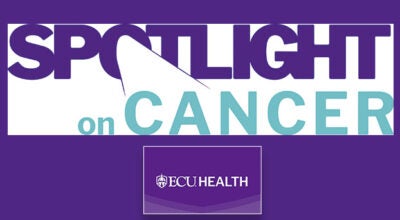The effect of lung cancer on women
Published 6:16 pm Wednesday, December 2, 2020
|
Getting your Trinity Audio player ready...
|
Although November was Lung Cancer Awareness Month for everyone, today’s focus is specifically for women. The reason for this is lung cancer rates. Since 1978, the rate of new lung cancer diagnoses in men has decreased by 36% but it has increased by 84% in women. Lung cancer is the number one cancer killer of women in the United States. Lung cancer also has the lowest five year survival rate for women of all cancers at 19.4%. Lung cancer rates in women have continued to rise, even as smoking rates have declined. Currently, about 12% of women in the U.S. smoke.
Smoking remains the primary cause of lung cancer in the United States. According to recent studies, approximately 90% of all patients with lung cancer are active smokers at the time of diagnosis. The other leading causes of this disease are the passive exposures to second-hand smoke, radon, and environmental pollutants. Some studies suggest that women may be more likely to develop lung cancer from second-hand smoke than men.
Lung cancer is a relatively quiet disease in the early stages. Tumors often go unnoticed until in advanced stages when they are large enough to obstruct airways. Symptoms such as chronic worsening cough, shortness of breath, and/or constant dull chest pain may not appear until then. Because these symptoms mimic the symptoms of other respiratory diseases such as bronchitis and COPD, diagnosis can be difficult. Pain is minimal in the early, more treatable stages due to the limited amount of nerve endings scattered throughout the lungs. As with any cancer, the later it is diagnosed, the more difficult it is to treat.
One of the most exciting advances in the prevention and treatment of lung cancer is the advent of the Low Dose CT Scan Screening for high-risk adults. Annual screening with this LDCT has proven to be far superior to detecting early stage lung cancer in this target group than any other screening tool. Studies show that the use of LDCT reduces mortality by more than 20% compared to the standard use of chest x-ray for diagnosis. The USPS Task Force defines high-risk as “asymptomatic adults aged 55 to 80 years who have a 30 pack-year smoking history and currently smoke or have quit smoking within the past 15 years.” Anyone who falls into this category should ask their doctor if they should get this screening. Women with prolonged exposure to second-hand smoke in the home should also discuss this with their doctors.
Becoming more aware of lung cancer, the symptoms, treatment options, and especially prevention makes it easier to combat this horrific disease. There have been more advances in lung cancer treatment in the last five years than there have been in any other disease. With this awareness comes the hope of one day curing it. Current treatments include surgery, radiation, chemotherapy, targeted therapy, immunotherapy, participation in clinical trials, and palliative care. Prevention, however, remains the best treatment option.
If you do not smoke, do not start.
- If you do smoke, seriously consider trying to stop. This includes vaping, too. Vaping is not a harmless alternative to smoking. Vaping can and does kill due to the uncontrolled chemical compositions of vaping fluids.
- Limit the time you spend around second-hand smoke, especially indoors and inside motor vehicles.
- Limit time spent outside during periods of poor air quality and heavy pollution.
- Do your part to prevent infection, for both yourself and others. WASH YOUR HANDS often and with antibacterial soap and make sure those around you do the same. Frequently wipe down high-touch areas with antibacterial wipes. Wear a mask when out and around other people.
- Get regular medical check-ups, and make sure that your family members do.
* Exercise regularly. Make it a family activity.
IF YOU CURRENTLY SMOKE AND WANT TO QUIT:
- Talk to your doctor about medications that might be able to help you;
- Start nicotine replacement therapy with the patches or gum available at most all retailers; and/or
- Go to websites such as www.lung.org (American Lung Association) or www.quit.com for more information on breaking free from cigarettes.
Alene Payne, MS, RRT/RCP, Manager, Cardiopulmonary Services of Vidant Beaufort Hospital can be reached at 252-975-4100.




